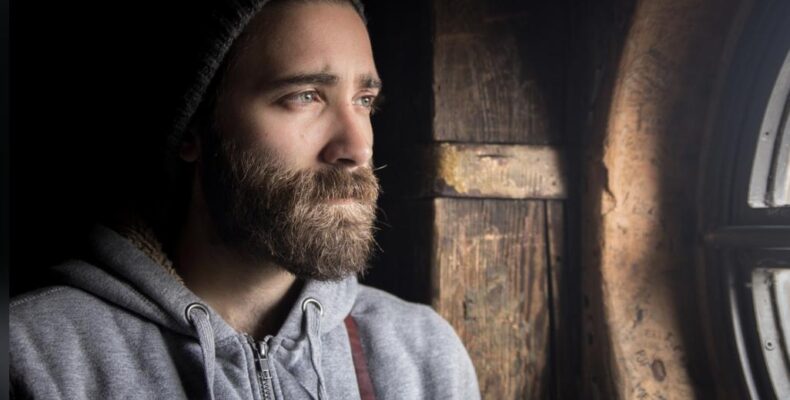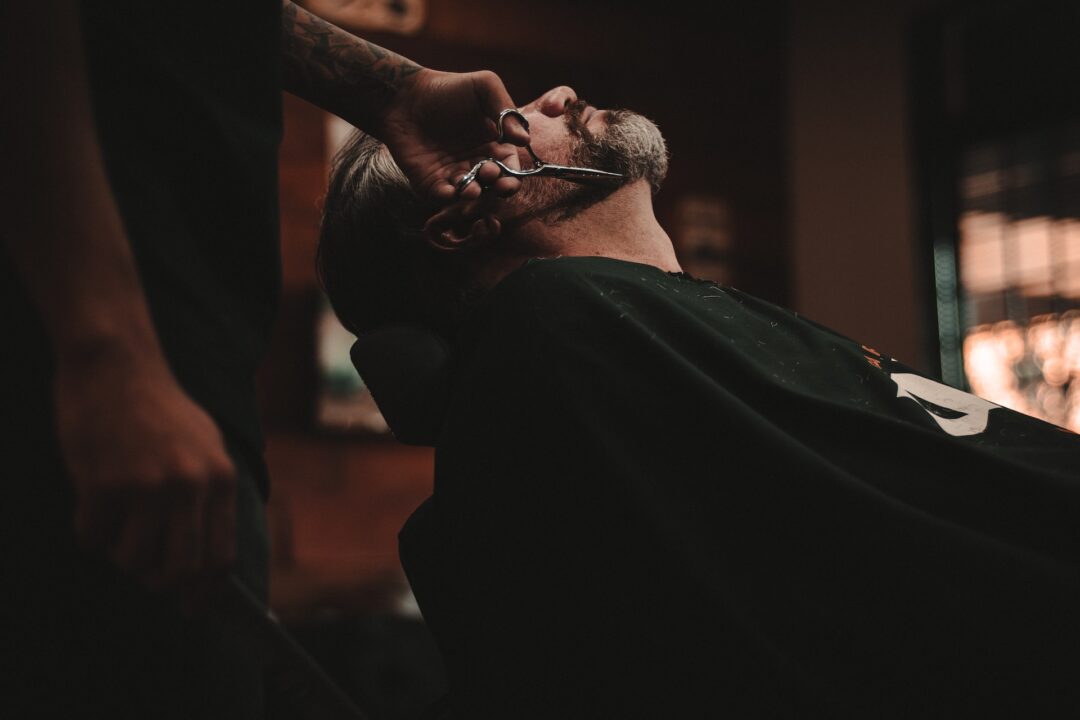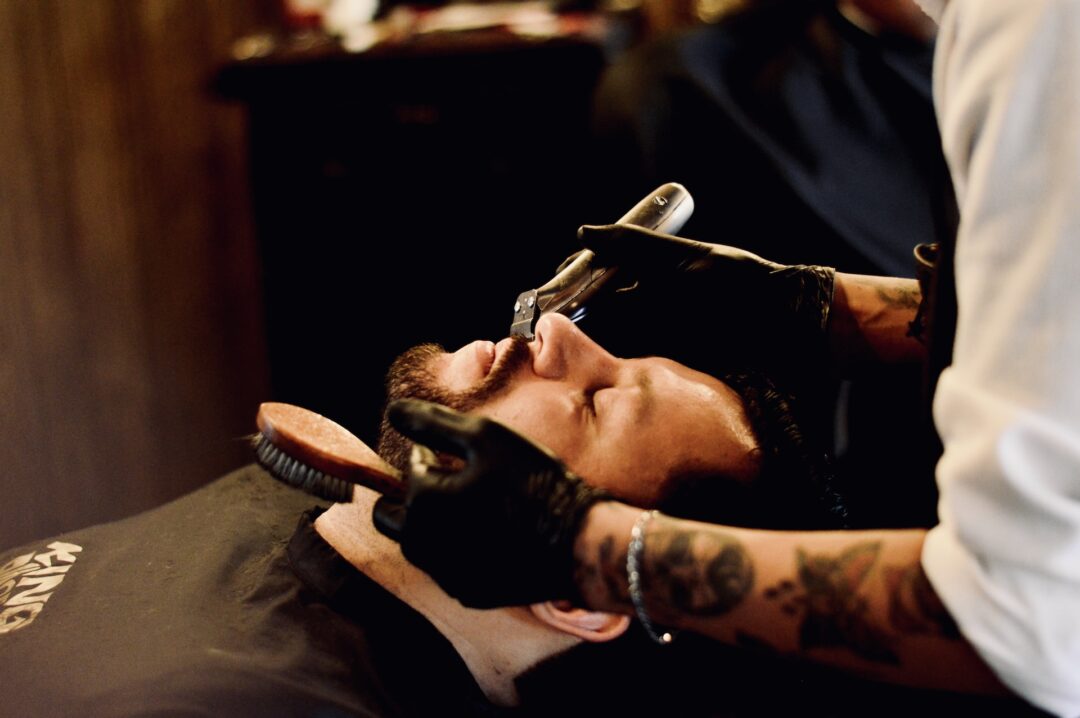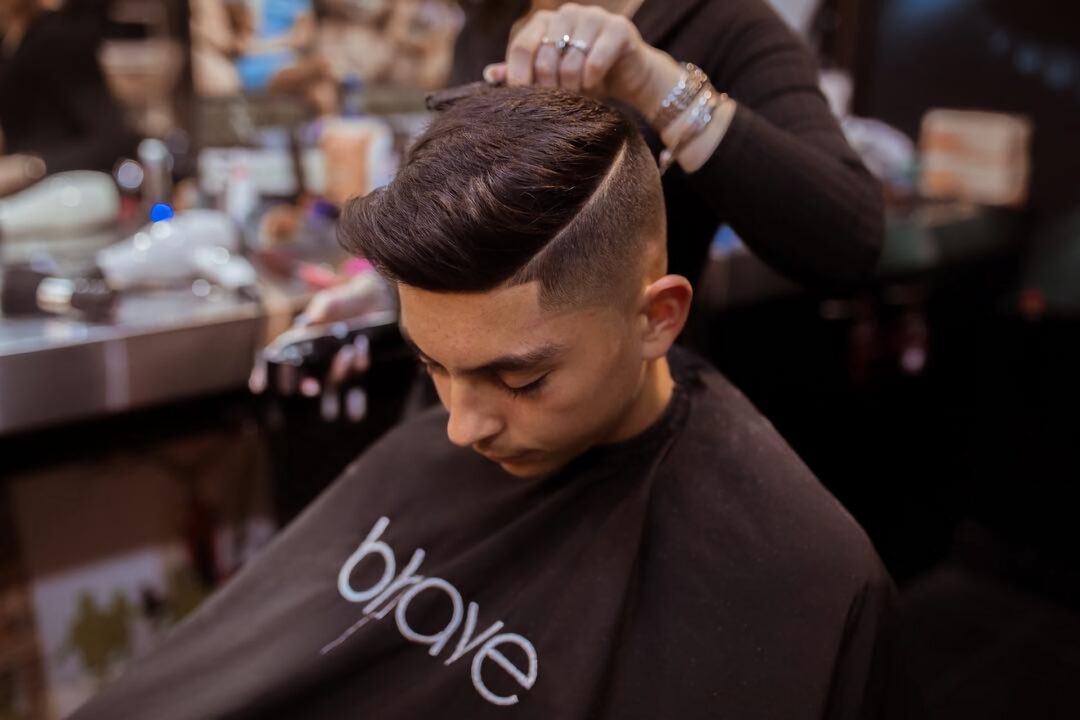In the realm of facial hair, varying opinions dominate discussions. While some view beards as scruffy or unsanitary, others perceive them as indicators of virility and dominance. Why do beards elicit such fervent reactions? What underlying symbolism do they carry? Delving into this article, we’ll unravel the historical significance of beards and what they represent for diverse individuals.
Historical Insights on Beards
Throughout the ages, beards have been emblematic of strength, authority, and manliness. However, their interpretation has fluctuated greatly across different civilizations and epochs. Let’s traverse the annals of time and examine how beards have been perceived globally.
Antiquity’s Perspective
In bygone eras, beards epitomized vigor and prowess. Egyptian monarchs, for instance, sported extended, prominent beards, signifying their supremacy and stature. Conversely, warriors in Mesopotamia maintained shorter beards for combat convenience. The Greeks revered beards as markers of erudition, with luminaries like Socrates and Aristotle being portrayed with luxurious facial hair.
The Medieval Transition
The Medieval period, often characterized by its vast tapestry of socio-religious changes, added another layer to the narrative of the beard. As kingdoms rose and fell, and as chivalry and knighthood gained prominence, the beard found itself intertwined with both worldly and spiritual affairs. During these times, the beard transcended its mere aesthetic appeal and delved deeper into the realm of symbolism. For the layman, a beard was more than just a sign of manhood; it was a mark of status, of experience, and of wisdom garnered through the trials and tribulations of the age. A knight with a beard, for instance, was not just seen as a brave heart but also as a seasoned warrior, one who had tales of battles and sieges to share.
However, the most profound transformation in beard perception during the medieval times was in the cloisters and monasteries. Monks, in their quest for spiritual enlightenment and asceticism, embraced the beard as an embodiment of their renunciation of worldly vanities. Their long, often untrimmed beards became symbols of their dedication, humility, and purity. It was as if the beard became an extension of their spiritual journey, a constant reminder of their vows and the divine path they had chosen. Additionally, this period saw the rise of many religious artworks, where saints and prophets were depicted with flowing beards, further cementing the association between beards and spiritual profundity.
The Renaissance Shift
The Renaissance, often hailed as the rebirth of art, culture, and intellect, was also a time of evolving fashion and aesthetic ideals. As Europe emerged from the shadows of the Middle Ages, there was a heightened sense of refinement and elegance among the upper echelons of society. Beards, which once symbolized wisdom and spiritual commitment, were now viewed through a lens of skepticism by the elite. They were relegated to the status of being ‘common’, something not befitting the aristocratic sensibilities of the time. For the nobility and the burgeoning bourgeoisie, a clean-shaven visage became synonymous with sophistication, urbanity, and modernity.
However, outside the opulent halls of palaces and manors, the story was different. For the common man, the beard remained a steadfast emblem of masculinity, strength, and maturity. It was also a testament to their resilience amidst societal changes and their connection to age-old traditions. The beard was, for them, a symbol of continuity in an era of rapid transformation. The latter part of the Renaissance witnessed a shift, though. The winds of change, brought by iconic figures like Sir Francis Drake and Sir Walter Raleigh, breathed new life into the beard’s reputation. These influential personalities, with their gallant exploits and charismatic demeanors, donned beards with pride, challenging the prevailing norms. Their endorsement not only bridged the gap between the elite and the commoners in terms of beard acceptance but also set the stage for the resurgence of the beard as a symbol of prestige, adventure, and audacity in the centuries to follow.
Victorian Sentiments
The Victorian era, with its emphasis on propriety, etiquette, and restraint, had a profound impact on various aspects of daily life, from fashion to personal grooming. In this period of structured formalities, the uninhibited growth of facial hair came to be seen as a rebellious act, a stark contrast to the polished image that Victorian society coveted. Beards were perceived as the domain of the wild, reminiscent of untamed nature and rugged individualism, qualities not particularly celebrated in the refined drawing rooms of Victorian England.
The societal elite, always in pursuit of perfection and keen to set the standard for acceptable behavior, largely distanced themselves from beards. They perceived facial hair as an unruly relic of a bygone era, unsuited to the sophisticated urban environments they inhabited. This sentiment trickled down, influencing middle and working-class men who aspired to climb the social ladder. The desire to fit into an ever-evolving mold of respectability meant that many chose the razor over the ruggedness, shaving off their beards to appear more ‘civilized’.
Yet, even in this age of trimmed sideburns and pristine collars, the beard, as a symbol, wasn’t entirely lost. It remained a silent, powerful marker of those who dared to be different, those who championed authenticity over adherence. While mainstream Victorian society might have moved away from beards, the era inadvertently highlighted the timeless allure of facial hair as a symbol of individuality and non-conformity.
The Contemporary Beard
In our contemporary era, globalization and technological advancements have shaped a world where cultures intermingle more than ever before. Yet, despite this mingling, the beard’s significance has managed to remain multifaceted, taking on different meanings across various cultural landscapes. In many African and Asian cultures, beards continue to be revered, tracing their lineage back to ancient traditions. Elders with long, flowing beards are often seen as reservoirs of wisdom, having experienced the ebbs and flows of life. The beard, in such societies, becomes more than just facial hair; it’s a visual representation of a life lived, lessons learned, and respect earned.
Conversely, in Western societies, the resurgence of beard popularity echoes a different narrative. Here, the beard often symbolizes a break from the conventional, a nod to individualism, and a medium for self-expression. From the meticulously groomed to the free-flowing, each beard tells a personal story, reflecting its wearer’s personality, beliefs, and even, sometimes, rebellions.
Furthermore, the modern beard has also become a canvas for artistry, with beard grooming and styling emerging as a craft in its own right. Beards today are accessorized, dyed, braided, and shaped, transforming them into dynamic fashion statements. Yet, amid these differing cultural interpretations and evolving styles, the beard’s core essence remains untouched. Its ability to command attention, respect, and intrigue has transcended eras, making it a truly timeless facet of human expression and identity.
Trending Beard Styles of the Era
Deciding to grow a beard is a personal endeavor, influenced by style, cultural implications, and sometimes, simply, the desire for change. If you’re teetering on the edge of this decision, understanding the variety and impact of different beard styles can be instrumental:
- The Full Beard: This is the quintessential beard, covering the entire jawline and chin. A canvas in itself, the full beard offers a broad spectrum of styling possibilities, from rugged and natural to impeccably groomed. While it’s often associated with maturity and wisdom, the full beard is also a statement of style, reflecting a preference for a classic look with an edge.
- The Goatee: Striking the balance between the clean-shaven look and full facial hair, the goatee focuses on the chin area. When combined with a mustache, it can completely transform a person’s appearance. This style is for those who wish to add a hint of distinction to their face without committing to a full beard. Whether sharp and defined or slightly unkempt, the goatee exudes a sense of calculated style.
- The Mustache: This iconic style has ebbed and flowed in popularity throughout history. From the thick handlebars of the 70s to the thin pencil styles of the 90s, the mustache is versatile and timeless. Today, it’s re-emerging with modern twists, reflecting both nostalgia and contemporary fashion sensibilities. The mustache can be a subtle nod to tradition or a bold fashion statement, depending on its styling and the wearer’s intent.
So, before you commit, assess your style preferences, the message you want to convey, and how much grooming time you’re willing to dedicate. Your beard, after all, will be a reflection of your individuality.

Decoding the Beard
Throughout history, beards have transcended mere facial hair, weaving a complex narrative of identity, status, and cultural significance. They have been heralded as symbols of wisdom, mocked as marks of uncouthness, and celebrated as statements of individuality. As time progresses, the interpretation of beards continues to evolve, yet their mystique remains firmly intact. As you embark on your journey of exploring or cultivating a beard, our platform endeavors to be your guiding light. We recognize the nuances and complexities that come with beard growth and maintenance. With that in mind, we have meticulously curated content that caters to every beard enthusiast, whether you’re a novice taking your first steps or a seasoned beard aficionado.
Navigating the world of beard care can be a labyrinth. But fear not, for we offer a comprehensive guide that delves deep into the essentials of beard nourishment. From the importance of a balanced diet to the magic of beard oils, we provide a holistic view of what it takes to nurture that mane to perfection.
Moreover, in our quest to serve you better, we’ve handpicked an assortment of grooming products that stand out in both quality and efficacy. Whether it’s a trimmer that ensures precision or a balm that promises softness, our recommendations are tried and tested. In essence, whatever your beard aspirations may be, our platform is dedicated to ensuring that you have the knowledge, tools, and products to achieve them.
Deciphering the Beard’s Significance
The visage often acts as a window to one’s identity, especially for men, where the beard plays a pivotal role in shaping initial perceptions. Numerous research endeavors have endeavored to understand the implications of a beard, the reasons men sport them, and the impressions they cast upon observers. Here’s a distillation of their findings:
Marks of Prestige
In the annals of time, the beard has often been more than just a physical attribute; it’s been a symbol, a statement, and sometimes even a manifesto. Great thinkers, philosophers, and visionaries from Socrates to Leonardo da Vinci donned facial hair, further cementing the belief that a beard was a mark of profound wisdom and introspection. The beard’s legacy as an emblem of stature and intellect stretches across continents, from the majestic pharaohs of ancient Egypt to the sagacious scholars of the East.
In more modern contexts, the power of the beard remains undiminished. Corporate leaders, artists, and influencers often sport beards, signaling both a departure from conventional norms and a nod to an age-old tradition of equating facial hair with authority. The modern beard isn’t just a throwback to ancient times; it’s a nuanced blend of the old and the new, combining time-honored respectability with contemporary style.
The act of cultivating a beard today goes beyond mere aesthetics. For many, it’s a rite of passage, a journey of self-discovery, and a bold declaration of individuality. The rise of beard grooming products and beard-centric salons underscore the modern man’s commitment to maintaining this symbol of prestige. In essence, while the narratives surrounding the beard may evolve with the times, its inherent significance as a mark of distinction remains unwavering.
Signifier of Maturity
Facial hair has perennially been associated with maturity and adulthood. Even in contemporary times, a bearded individual often appears more seasoned than his actual age.
Symbol of Vigor
Research suggests that beards not only signify socio-economic status and maturity but also resonate with traits of virility and robustness. Men bereft of a beard may sometimes be perceived as less masculine, prompting some to embrace facial hair to amplify their masculine quotient. Intriguingly, certain studies propose that women might find beardless men more appealing.
Badge of Self-Assuredness
While beards can echo ruggedness, they equally underscore confidence and individuality. In the modern era, many opt for a beard as an emblem of their uniqueness, asserting their indifference to societal aesthetics.
Reading the Bearded Man
Given the myriad reasons behind men’s choice to maintain beards, a pressing question emerges: What do different beard styles reveal about an individual’s persona?
Clean Shaven
Opting for a hair-free face often denotes formality, diligence, and meticulousness. This stereotype might explain why numerous corporate honchos historically preferred the clean-shaven look. Additionally, a smooth visage imparts a youthful and innocent charm that some might find enchanting.
Light Stubble
Often labeled as the “rugged gentleman” style, this look appeals to those who thrive in the duality of life. It is the go-to style for men who value spontaneity, cherishing life’s impromptu moments. Interestingly, this beard type has also become synonymous with weekend getaways or vacations, where one breaks free from the chains of routine. It suits those who don’t want to invest too much time grooming daily but still want to maintain an aura of mystique and allure.
Moustache
A dwindling style, the mustache, when sported by the older generation, signifies masculinity. For the younger lot, it’s reminiscent of a penchant for vintage aesthetics, marking out individuals who are unapologetically idiosyncratic.
With roots deeply embedded in history, the mustache is no longer just a style statement but a nod to the timelessness of classic grooming. From silent film stars to eminent writers, the mustache has graced many influential figures, adding depth to their personas. Younger enthusiasts of this style often pair it with retro attire, hinting at a soul that yearns for the golden days of yore.
Patchy Beard
Once en vogue, this style, characterized by a mustache extending around the mouth, is emblematic of those conscious about their appearance but equally battling underlying insecurities. They tread the middle ground, not fully embracing the bearded or clean-shaven extremes.
This beard type reflects a journey. It’s a narrative of transition, of growth, and of finding oneself amidst societal pressures. Men with patchy beards often resonate with being on a self-discovery path, exploring where they fit on the grooming spectrum while seeking acceptance for their choices.
Trimmed Beard
This style, which doesn’t sprawl across the face, is favored by those who fancy the essence of a beard but refrain from a full-fledged version. Demanding meticulous grooming, it’s preferred by individuals who project discipline and gravitas.
Owing to its neat and well-defined lines, the trimmed beard is often linked with precision, method, and intention. Men who opt for this style value structure in their lives. They are seen as the strategists, the planners, and those who value consistency. Their grooming choice is a reflection of their methodical approach to life’s challenges.
Lush Beard
Achieving a dense, lengthy beard, especially the ‘hipster’ kind, demands tenacity. When maintained, it reflects an individual’s dedication to grooming. However, a disheveled version can indicate a carefree, laid-back personality. Regardless of its state, it’s emblematic of someone self-assured, unswayed by external opinions.
To wrap up
In conclusion, the beard, in its multifarious styles and lengths, serves as more than just a fashion statement or a grooming choice. It acts as a silent narrator, weaving tales of an individual’s personality, values, and life experiences. History has shown us that beards have been instrumental in shaping perceptions of power, maturity, and status. But as society evolved, so did the reasons for sporting a beard and the interpretations thereof.
Today’s world is marked by a celebration of individuality and authenticity. While beards continue to echo historical connotations of masculinity, power, and wisdom, they also speak volumes about one’s journey to self-acceptance and the courage to defy societal norms. The choice of going clean-shaven or sporting light stubble might reflect one’s profession or a preference for simplicity. In contrast, a lush beard might be an ode to patience and commitment, or simply a love for a particular aesthetic. Additionally, the beard becomes a canvas, a testament to the changing perceptions of masculinity. While traditionally, the rugged, dense beard was synonymous with raw masculinity, the modern world welcomes a more diverse and inclusive understanding. Men now wear their beards (or lack thereof) as emblems of their evolving identities, unbound by archaic stereotypes.
Facial hair, thus, transcends its biological origins to become a potent symbol in the sociocultural landscape. It bridges the past with the present, traditional ideals with modern aspirations. As society continues to evolve, the narrative around beards will undoubtedly shift, reflecting the zeitgeist of the times. But for now, each beard, mustache, stubble, or clean-shaven face tells a unique story, waiting to be deciphered and appreciated.



